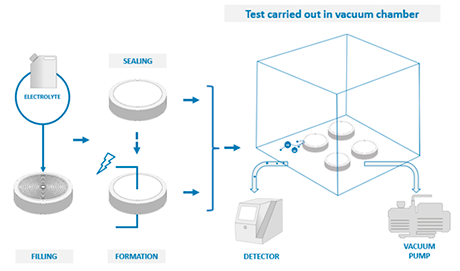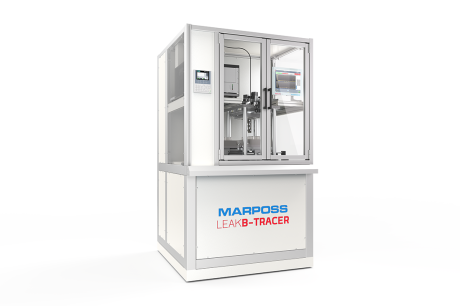Leak Testing Of Sealed Battery Cells Through Electrolyte Tracing
Leak testing is a fundamental operation in the production process of battery cells, in particular, the new generations of rechargeable lithium-ion batteries.
The perfect sealing is necessary to prevent the loss of electrolytes, often composed of flammable solvents which can produce toxic substances if they come in contact with the humidity in the air. Furthermore, it is equally important to prevent moisture and other sources of external contamination from entering the cell, which could compromise its functionality.
Leak testing can be performed on the production line using conventional techniques with helium as a tracer gas, but only in the stages of the process in which the cell has not yet been completely sealed. Alternatively, it is possible to add helium during the electrolyte filling and trap it inside the cell, but this technique interferes with the production process and is not applicable for every type of cell.
The electrolyte tracing technique, on the other hand, makes it possible to carry out the leak test in the final stages of the process, after filling the cell with the electrolytes and its complete sealing.
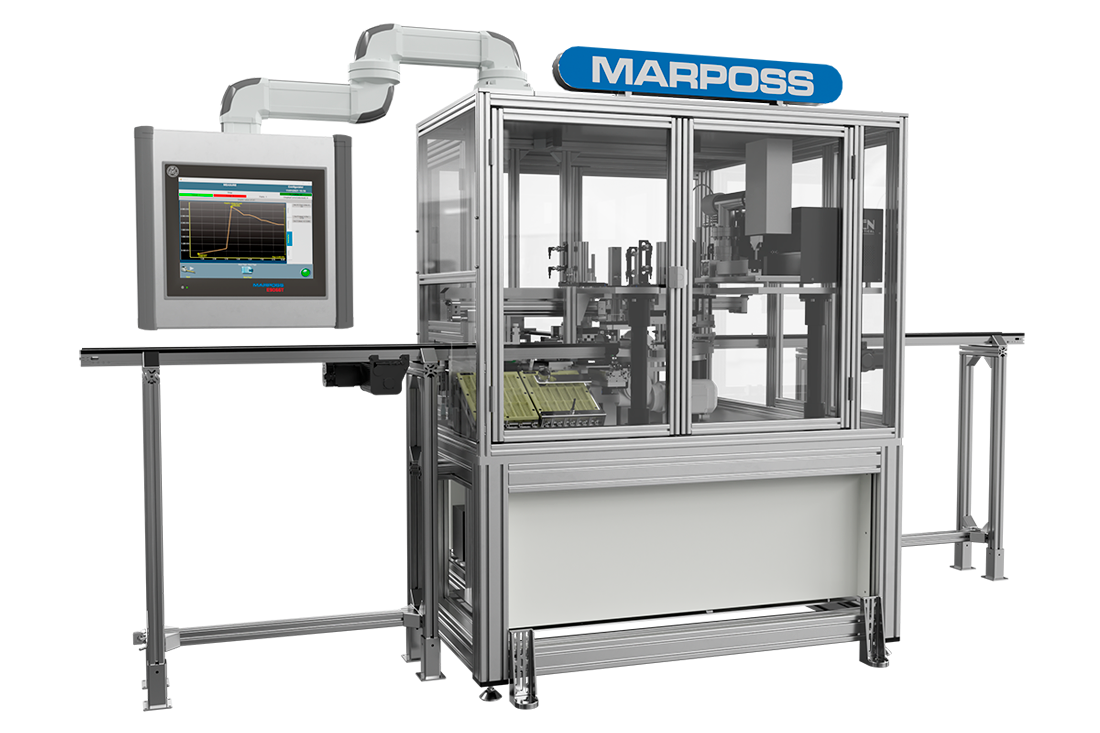
This is a leak testing technique that can be applied to any type of battery cell (button, cylindrical, prismatic, or pouch), which uses organic-based liquid electrolytes. It's possible to trace different types of solvents typically used in the production of lithium-ion cells, such as DMC, DEC, EMC, PP, etc.
Cells can be tested in different stages of the production process: immediately after electrolyte filling and sealing, after formation, or after degassing and subsequent final sealing, and up to the check during the end-of-line testing.
The cells are placed in the vacuum chamber during the test. In the presence of a leak in the housing, the partial vaporization of the electrolyte solvent is generated and it exits from the cell towards the vacuum chamber. The test principle is based on the possibility of measuring the extent of the leak by tracing these electrolyte vapors with a quadrupole mass spectrometer.
The possibility of implementing this test method in a mass production line grants the ability to carry out these operations in a fast and automated way, in order to be compatible with the typical line rates in the production of cells.
The test strategy involves a sequence of different operations (Patent Pending) that have been developed in order to minimize the cycle time.
Depending on the type of cell (button, cylindrical, prismatic or pouch) and its size, special customizations may then be necessary in relation to the dimension and shape of the vacuum chamber, number of cells in the chamber, test time, ...
The picture on the front page shows an example of an automatic machine for the leak test with electrolyte tracing for a button cell production line, characterized by a rate of 1 cell per second.
In order to prevent contamination of the vacuum chamber, a gross leak test is carried out, in order to discard the cells with macroscopic defects.
Subsequently, a batch of 12 cells is tested simultaneously in the vacuum chamber, with a test time of 9 sec. In the event of a rejected batch, the 12 cells can all be sent to reject, or be tested individually in a second off-line test bench, in order to segregate only the cells that are actually defective.
- Test applicable on any type of cell (button, cylindrical, prismatic or pouch)
- Test applicable at any stage of the process, after electrolyte filling and sealing
- Applicable test for different types of electrolyte
- Easily automated test for integration into the production line
- No need to add a tracer gas for testing
- No interference with the production cycle
- Fast testing procedure
Test on cylindrical and button cells
Test on prismatic cells
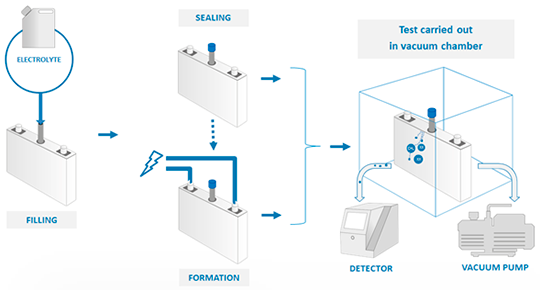
Test on pouch cells
To perform the test on soft-body cells, such as pouch, it is necessary to adopt suitable tooling to rigidly constrain the surface of the cell to avoid swelling when the vacuum is applied in the vacuum chamber. The test guarantees the possibility to identify the presence of leaks in the most critical areas of the cell.
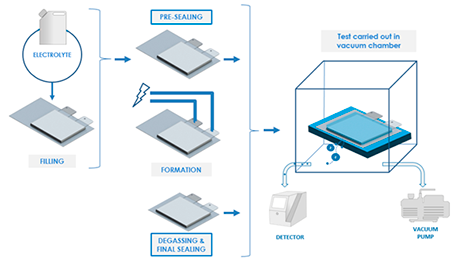
BROCHURES AND MANUALS
| Brochure | |
|---|---|
| English |
LEAK TESTING OF SEALED BATTERY CELLS THROUGH ELECTROLYTE TRACING: (631.83kB)
|
